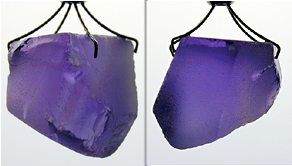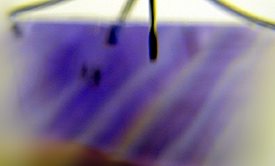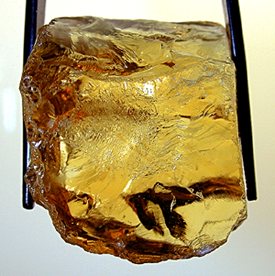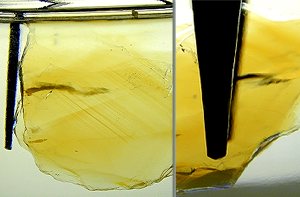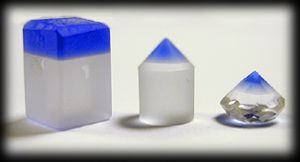Refractive Index Solution
A Refractive Index Solution can be used to examine the interior of a stone with more detail. If you place a piece of rough in a liquid that has a "refractive index" (R.I.) more like the R.I. of the rough, then the exterior walls will tend to disappear. It is mush easier to look into the stone for flaws or color zoning. One such material is called "REFRACTOL" and has an R.I. of 1.567. (Good news is that it has no odor!) Since quartz (citrine) has an R.I. of 1.54 it works pretty well.
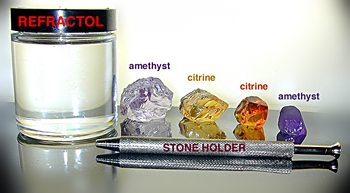
To the left are 4 quartz rough pieces, and a bottle with REFRACTOL. REFRACTOL is an oily media, so it is a little messy to work with, but worth the effort.
Use a retractable stone holder or tweezers to hold the stone and immerse it in the liquid. See the next couple of pair of images with the stone backlighted only, then backlighted with the refractol. Notice how easy it is to see the "inside" with the use of this liquid media.
Notice that in the first two photos (same stone different angles) there is no real indication of strong color banding. After the stone is immersed in the refractol, the banding becomes quickly evident. To get the best color from this stone, the color bands should be placed parallel with the table. In this case the stone is free of internal flaws, but banding is present.
